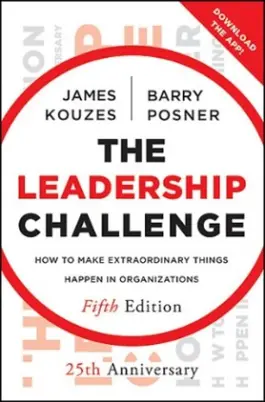Real Leadership Is Caught, Not Taught
By Corporate Education
Leadership by the book

Leadership: what exactly is it? Leaders: what do they do? What set of traits are most desirable for leaders?
You can start answering these questions in more depth by reviewing a remarkable standard in the study of leadership: The Leadership Challenge by James Kouzes and Barry Posner. First published in 1987, it has successfully sold over three million copies.
Kouzes and Posner identified five common concepts in their survey of leaders internationally, and derived from them these five practices of leadership:
- Model the way.
- Inspire a shared vision.
- Challenge the process.
- Enable others to act.
- Encourage the heart.
In this post, we will take a deeper look at Leadership by considering the first practice above: Model the Way.
I’ve always really liked the expression, “Real leadership is caught, not taught.” So it is with almost everything we become in life. Somewhere along our path, we had a good model of behavior, a person who acted in such a way that we decided consciously or unconsciously to emulate them. Of course the impact of a great model starts with parents and teachers, but continues into meaningful friendships, and work relationships later in life.
It’s helpful to pause for a moment and ask yourself, who have been the most meaningful and influential leaders in my life, and what did they model for me? I’m confident someone will come to mind quickly. The memories that will stick may be some words or ideas they communicated that have stuck with you. However, I’ll wager that the behaviors they modeled have left the greatest impact. They taught you, often without words, who and how to be when you are at your very best. They taught you what to value by showing you what they valued in action.
The Leadership Challenge Chapter 2 highlights two very important actions about modeling the way:
First, clarify your own values.
Leaders are at their best when they know who they are and what they stand for. Kouzes and Posner define values as beliefs about how things should be accomplished. They are the standards, ethics and beliefs that define you as an individual leader. Have you ever tried to write out your Leadership Philosophy? Start with your values. Write out 3-5 deeply held values. I did this in a Leadership class and here a few I jotted:
- All people deserve to be treated with respect and fairness.
- Collaborative relationships are how we change the world.
- We must embrace change to grow and mature.
These values are at my very core and define who I am and how I act on a daily basis. They are the principles that undergird my leadership behaviors, and they impact my work. What are yours?
Values matter because this is what dictates our behaviors. People will follow someone whose behaviors line up with their communication, another word for this is authenticity. When leaders communicate about what matters from their very core, and their action reflect the same, they are authentic. And it’s inspiring!
Kouzes and Posner’s research points loud and clear to one conclusion here: the highest levels of commitment are found where personal values are the clearest.
Second, affirm shared values with those you lead.
Organizational leaders know that for their teams to be at their best, fully engaged, and productive, they must connect with and respond to the values of their people. It’s critical for us to know, not just what people want to do at work, but why they want to do it. What motivates people every day to contribute their time and effort? What do they care about?
There are both formal and informal ways of finding out what people value. Informal discussions happen around the coffee pot or at the lunch table; they come out in conversations when people are making small talk. A pastor of mine once said, “Give me 20 minutes with a person alone and I will tell you what really matters to them.”
Formal methods could be structured team times, including activities designed to get people communicating and sharing about themselves and what’s important to them. You can build this into a team retreat or into a regular meeting. Tools have been created to help people discover and define values for themselves.
Click here to download a fantastic Values Inventory tool that you can use right away with your team.
Once you know people’s values, you can work to set up an environment that reflects what you all have in common. You arrive at a set of team values, commit to live by and support them, and then watch the team engagement that results. Naturally you will discover the diversity of your teams when you do this analysis, but Kouzes and Posner emphasize that even in the diversity of values, leaders find a way to build agreement. Chapter 2 of The Leadership Challenge lays out the research and a long list of the amazing benefits when leadership and team values are aligned.
I highly encourage you to read this book for the great details we are only skimming over here. It will make a difference in you as a leader!
Contact us